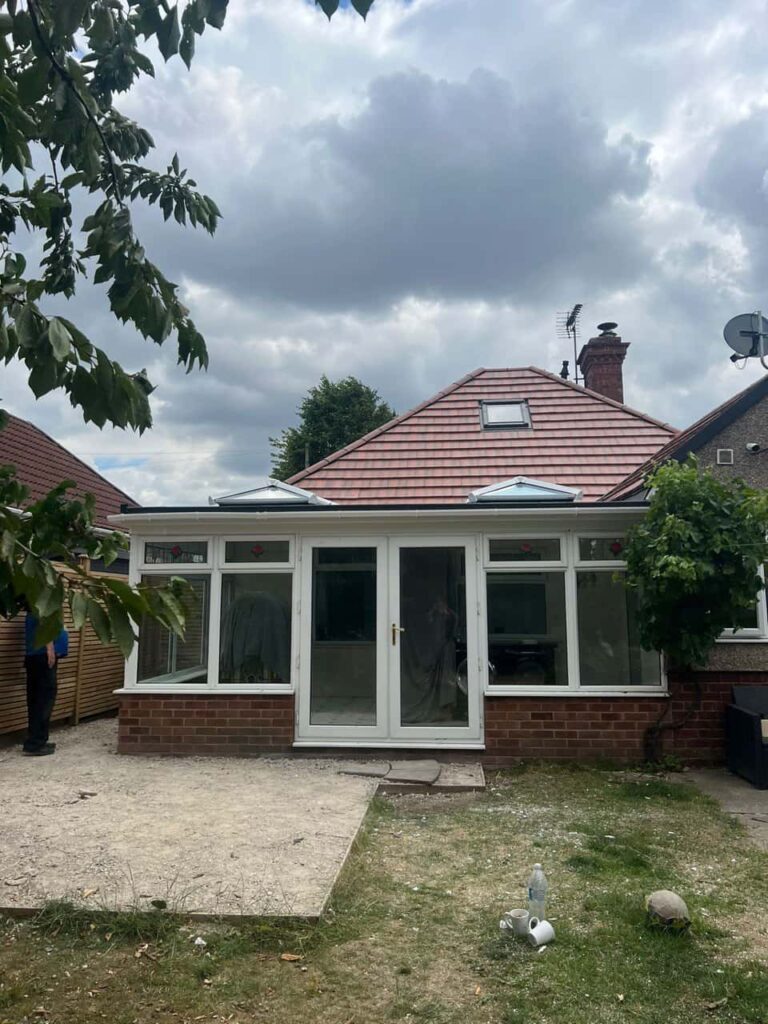A slipped roof tile may look like a small problem, but it’s often a warning sign of something deeper. Roofs are designed to work as complete systems — each tile, batten, and fixing contributes to keeping water out and protecting your property. When one or more tiles slip, it’s not just the surface that’s affected. At West Bridgford Roofing Repairs, we regularly inspect and repair slipped tiles across West Bridgford, Nottingham, helping homeowners identify the root cause before it develops into a serious roofing issue.
Why Slipped Tiles Are More Than Just a Cosmetic Concern
Many homeowners assume that a slipped tile only affects appearance, but in reality, it can expose the roof to significant damage. A displaced tile creates a direct opening for rainwater, debris, and even wind to penetrate beneath the surface. Over time, this leads to hidden issues such as:
- Damp patches or water ingress in the loft or ceiling.
- Decay of roofing battens and underlay.
- Weakened tile fixings that cause further movement.
- Growth of moss or mould in damp, unventilated spaces.
A single slipped tile can compromise the waterproof layer beneath, allowing small leaks to spread before they become visible indoors.
What Causes Roof Tiles to Slip
Tiles can slip for a variety of reasons, and understanding the cause helps prevent recurrence. The most common factors include:
- Weather exposure: Strong winds, heavy rainfall, and frost can loosen tiles or their fixings.
- Aging materials: Nails, clips, and mortar beds degrade over time, particularly on older roofs.
- Improper installation: If tiles were not securely fixed during fitting, they’re more likely to shift under stress.
- Structural movement: Natural settling or expansion of roof timbers can disrupt the alignment of tiles.
- Poor maintenance: Accumulated moss, dirt, or water can weaken fixings and increase weight on the roof.
At West Bridgford Roofing Repairs, we don’t just replace slipped tiles — we investigate why they’ve moved to ensure the problem doesn’t repeat itself.
Why Checking Beneath the Slipped Tile Is Essential
When a tile slips, the area beneath it is immediately exposed to the elements. Simply repositioning or replacing the tile without checking the substrate can leave hidden issues untreated. A thorough inspection may reveal:
- Rotting battens: Wooden battens that hold tiles in place can deteriorate from prolonged damp exposure.
- Damaged underlay: Roofing felt or membrane can tear or wear away, losing its waterproof function.
- Corroded fixings: Nails or clips may have rusted through, causing tiles to loosen again in the future.
- Structural gaps: Shifting tiles may indicate movement in the rafters or uneven support underneath.
Inspecting these components allows professional roofers to provide a lasting fix rather than a temporary patch.
The Hidden Dangers of Ignoring Slipped Tiles
Delaying repairs or skipping a proper inspection can lead to more severe and expensive damage later on. Common long-term consequences include:
- Persistent leaks that damage ceilings, walls, and insulation.
- Structural timber decay that compromises roof strength.
- Damp-related mould growth, affecting indoor air quality.
- Larger areas of roof failure as other tiles become dislodged.
West Bridgford Roofing Repairs often finds that homeowners who ignore a few slipped tiles end up facing extensive repair work later. A timely check can prevent these issues and restore the integrity of your entire roof.
How Professionals Diagnose and Fix the Issue
An experienced roofing specialist will follow a detailed process to identify both visible and hidden damage. When attending properties in West Bridgford, Nottingham, our team typically:
- Inspects the full roof area to locate all displaced or loose tiles.
- Assesses the condition of battens and underlay beneath the affected section.
- Checks surrounding tiles to ensure they remain securely fixed.
- Replaces or repositions tiles using appropriate clips, nails, or mortar.
- Restores waterproof protection by repairing or replacing damaged felt.
- Advises on maintenance to reduce the risk of future slippage.
By addressing the cause as well as the symptom, this approach guarantees a reliable, weatherproof result.
Preventing Slipped Tiles in the Future
While it’s impossible to control the weather, regular maintenance and early detection can prevent most tile movement. Homeowners should:
- Schedule professional roof inspections once or twice a year.
- Remove moss and debris that hold moisture or add weight.
- Keep gutters clear to avoid water backing up under tiles.
- Check the loft after storms for any signs of water ingress.
Fast, professional attention from West Bridgford Roofing Repairs ensures that small issues are corrected before they escalate.
Why Professional Repairs Are Worth It
DIY attempts to fix slipped tiles often lead to incomplete or unsafe repairs. Without checking the underlying structure, it’s easy to overlook deeper problems that continue to cause leaks. Professional roofers not only restore the appearance of your roof but also ensure every layer beneath it is sound and weather-resistant.
At West Bridgford Roofing Repairs, our experienced team uses the right materials and techniques to secure each tile properly, maintaining the roof’s original strength and function. We treat every repair as part of a complete roofing system, not just a surface fix.
Conclusion
A slipped roof tile is never something to ignore. While it may look minor, it can quickly lead to leaks, damp, and structural deterioration if not checked thoroughly. Proper inspection of the area beneath the tile is essential to ensure lasting protection.
For homeowners in West Bridgford, Nottingham, West Bridgford Roofing Repairs provides expert tile inspection, repair, and maintenance services that address both the visible issue and any underlying damage — keeping your roof secure, durable, and weatherproof for years to come.
Call us on: 0115 647 1193
Click here to find out more about West Bridgford Roofing Repairs
Click here to complete our contact form and see how we can help with your roofing needs.

